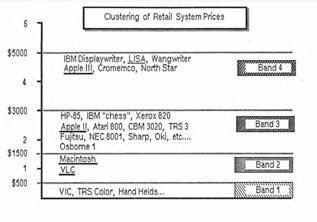Have you ever run into a convenience store to buy a drink? Whenever I stand in front of the drinks’ refrigerator I am amazed at the variety of water on the shelf. Some of the labels claim that the water within  comes from a rare spring high up in an unpolluted mountain or melted from an ancient iceberg. Despite the common sense niggle that the expensive bottle cannot possibly be worth the price tag and my own thoughts that the water is in fact not much (if any) better than tap water, the lure of the clear bottle and the elegant label makes me hesitate. If I am going to buy water in a bottle, then surely I should opt for one that is bound to be the purest there is. It can’t be cheap to get water down from the mountain. Then again… it really is just water in a bottle.
comes from a rare spring high up in an unpolluted mountain or melted from an ancient iceberg. Despite the common sense niggle that the expensive bottle cannot possibly be worth the price tag and my own thoughts that the water is in fact not much (if any) better than tap water, the lure of the clear bottle and the elegant label makes me hesitate. If I am going to buy water in a bottle, then surely I should opt for one that is bound to be the purest there is. It can’t be cheap to get water down from the mountain. Then again… it really is just water in a bottle.
Price is a lens through which the customer views your product. It can never be isolated from your product. It is part of your product. Price also provides the customer with a perception of quality. Entrepreneurs easily fall into the trap of wanting to compete based on quality and price.
But what would happen if you priced yourself as the cheapest in the market? How would your product being the cheapest affect the way that the customer views you?
Another question to ask is “How many cheapest companies are there in the market?”. The answer to this is only one. There is always only one cheapest company in the market. Take a moment now to think about some brands that have made themselves the cheapest brand in the market? Think about cellular phones, or telecommunication networks. What is your perception of this brand? Once a brand has priced themselves as ‘cheap’, it is difficult to move away from that perception.
On the other side of the price market, we have a company like Apple. At the time apple was launched it took a different strategy, despite being a relatively small start-up compared its competitors. Instead of pricing themselves as low, they decided to price themselves high. They wanted to be perceived as remarkable, as different. They wanted the customer to understand that this difference was worth paying for.
The Pricing Trade-Off
Below is an extract from the Apple business plan written in 1981. Have a look at their pricing strategy. What Apple did in 1981 already was to create a product trade-off strategy.


